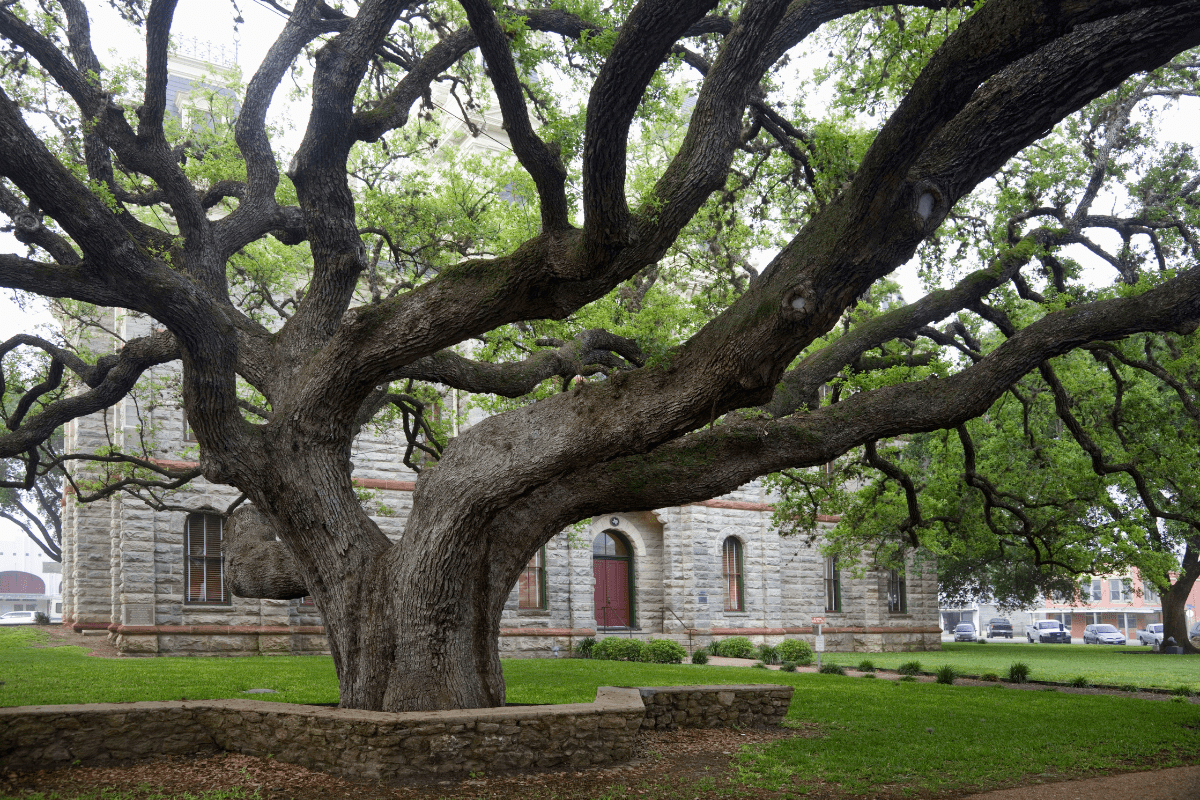Living in Corpus Christi means you're perfectly positioned for some of Texas's best-kept secrets. Within two hours of downtown, you'll find everything from the world's largest working ranch to fishing villages that time forgot. Here's your guide to the destinations that locals actually visit when they want to escape the city.
Port Aransas proves that authentic beats touristy every time
Forget everything you think you know about Texas beaches. Port Aransas, just 45 minutes across the JFK Causeway, lets you drive your truck directly onto 18 miles of sand and set up camp wherever you please. The twelve dollar annual parking permit sold at local gas stations is the best bargain on the coast, especially when you realize it includes primitive camping rights for up to 72 hours.
The difference between Port Aransas and Corpus Christi's city beaches becomes obvious the moment you arrive. Here, fishing boats still outnumber jet skis, and the 1,200-foot Horace Caldwell Pier charges just $3 per person to fish without a license. Beach Access Road 1A offers the hardest-packed sand and best amenities, while areas south of mile marker 30 provide the solitude that crowded Padre Island can't match.
The shelling secret locals don't advertise
Serious shell collectors know to arrive two hours before low tide at the south jetty area. But the real treasure lies across the water at uninhabited San José Island, accessible via private ferry from Fisherman's Wharf. Lightning whelks, sand dollars, and angel wings wash ashore completely untouched by tourist hordes.
The dining scene matches the authentic vibe. Fins Grill & Icehouse offers their famous "you hook, we cook" service overlooking the harbor, while cash-only La Playa Mexican Grill pours from their collection of 70 plus tequilas. Don't expect fancy presentation… expect incredible flavor and portions that justify the drive.
King Ranch delivers Texas history you can actually touch
Forty minutes north via US-77 brings you face-to-face with 825,000 acres of living history. King Ranch isn't just bigger than Rhode Island; it's where American ranching was born in 1852, where the first registered Quarter Horse was bred, and where Santa Gertrudis cattle were developed. The twenty dollar tour for adults runs Tuesday through Saturday at 11am and 1pm, and it sells out regularly for good reason.
The 1.5-hour guided bus tour takes you through working ranch operations past herds of cattle and Quarter Horses grazing in seemingly endless pastures. You'll visit the historic Colony where vaquero families have lived for generations, see the birthplace of modern ranching techniques, and understand why this place earned National Historic Landmark status. Summer heat makes the bus tours uncomfortable, so plan visits for cooler months.
The museum houses unexpected treasures
The King Ranch Museum charges ten dollars for adults and showcases the remarkable Donald Bowman Bird Collection featuring 405 taxidermied specimens representing 170 species. Vintage vehicles include the custom "El Kineño" Buick that transported ranch royalty across the vast property.
For serious wildlife enthusiasts, the ranch hosts 300 plus species including the rare ferruginous pygmy owl. Half-day birding tours with guide Marlett come highly recommended for private groups seeking deeper insights into both ranch operations and wildlife management practices that have made this ecosystem so successful.
Historic Goliad preserves the authentic birthplace of Texas
One hour northwest via US-181 brings you to where "Remember Goliad!" became a rallying cry following the 1836 massacre of 342 Texan soldiers. Presidio La Bahía, charging five dollars for adults, stands as the world's finest example of a Spanish frontier fort and has held continuous Mass in its chapel since 1779.
Minutes away, Mission Espíritu Santo in Goliad State Park showcases a completely restored 1749 Franciscan mission that once operated Texas's largest cattle ranching operation. The seven dollar admission per person includes access to the mission and surrounding park where you can walk through living history rather than just reading about it.
You can actually sleep where history happened
Here's something most tourists never discover: you can stay overnight in the Presidio officers' quarters for $85-125 per night. Sleeping where Spanish commanders once planned frontier defense beats any hotel experience for history buffs.
The town square preserves authentic frontier character with its 1894 limestone courthouse designed by Henri Guindon. Ancient live oak trees, saved by determined ladies who chained themselves to prevent removal, now have streets paved around them. March brings the annual Goliad Massacre and Living History Program featuring battle reenactments and candlelight tours for $5 admission.
The recently improved 6.6-mile Goliad Paddling Trail along the San Antonio River offers gentle waters past working ranches and historic sites. Blue Quail Deli serves their award-winning Cream of Jalapeño Soup that perfectly balances spice and comfort for the drive home.
Lake Corpus Christi State Park maximizes value for outdoor families
Just 45 minutes via US-359, Lake Corpus Christi State Park provides exceptional value at five dollars per person for day use. This 18,256-acre lake surrounded by rare South Texas brush country serves as a critical stopover for Neotropical migrant birds, with over 200 species documented including painted buntings and green jays.
The park's 400-foot lighted fishing pier requires no license and regularly yields largemouth bass, white bass, and catfish. The accessible design accommodates wheelchairs, with an all-terrain model available for loan that can handle the park's diverse terrain.
Depression-era craftsmanship meets modern accessibility
What elevates this park above typical state facilities is its preserved 1930s Civilian Conservation Corps architecture, including the original stone refectory that stands as a monument to Depression-era craftsmanship. The Catfish Point Trail (0.8 miles) provides flat, family-friendly hiking with exceptional bird blinds, while the connecting Longhorn and Kiskadee Trail adds another 1.2 miles through diverse habitats.
Rangers warn that alligators inhabit the lake, adding excitement but requiring caution. Current drought conditions have temporarily closed boat ramps as of late 2024, though the pier remains accessible. Peak birding occurs during spring migration (March-May) and fall (September-November), with early morning and late afternoon providing optimal wildlife viewing.
Aransas National Wildlife Refuge protects North America's rarest birds
The 1.5-hour drive northeast via Highway 35 to Aransas National Wildlife Refuge rewards visitors with the only wintering habitat for wild whooping cranes, North America's rarest bird with just 400 plus remaining. The cash only entrance fee of $3-5 grants access to the 16-mile auto tour loop through 115,000 acres of pristine Gulf Coast habitat.
From November through March, the endangered whooping cranes arrive from Canada, viewable from two observation towers (20 and 40 feet) offering panoramic bay vistas. The refuge experience centers on the self-guided auto tour best undertaken in early morning when wildlife activity peaks and temperatures remain comfortable.
Wildlife viewing exceeds expectations
The guaranteed alligator viewing area near the visitor center thrills families, while the fully accessible boardwalk and 100-foot fishing pier provide redfish and sea trout opportunities year-round without licenses. Multiple trails including Heron Flats (1.4 miles) and Big Tree (0.7 miles) offer intimate wildlife encounters with 400 plus species documented.
Visitors must bring water and snacks as no facilities exist along the tour route. The visitor center, rebuilt after Hurricane Harvey, opens Wednesday through Sunday from 9am-4pm with enhanced viewing platforms featuring spotting scopes for crane observation. Rangers provide current wildlife updates and optimal viewing recommendations.
Rockport-Fulton blends sophisticated art with authentic fishing culture
This twin coastal village 40 minutes northeast via US-35 merges sophisticated art galleries with authentic fishing culture, creating a destination that locals guard from tourist overflow. The crown jewel remains "The Big Tree" at Goose Island State Park, a 1,000-year-old coastal live oak with a 35-foot trunk circumference that survived countless hurricanes including Harvey.
The park's 1,620-foot fishing pier extending into St. Charles Bay yields exceptional catches of speckled trout and red drum without requiring licenses. The pier is positioned perfectly for watching whooping cranes across the water at Aransas refuge, combining two experiences in one visit.
Cultural sophistication meets coastal authenticity
Downtown Rockport earned designation as Texas's first "Cultural District" with 12 plus galleries showcasing coastal art. The Texas Maritime Museum offers free admission and chronicles the region's seafaring heritage through interactive exhibits that kids actually enjoy.
The restored Fulton Mansion represents rare Second Empire Victorian architecture featuring 1870s innovations like gas lighting and indoor plumbing that seemed miraculous to frontier Texas. For dining, locals closely guard Charlotte Plummer's secret "crab tower," a six-inch monument of lump crab meat, while Alby's Seafood serves extraordinary po'boys from their carry-out window overlooking Fulton Harbor.
The protected bay waters create ideal conditions for kayaking the Aransas Pathways, ten marked birding sites along paddling trails where 400 plus species congregate during migration. Unlike Port Aransas, Rockport offers free beach access without permits or fees.
Port O'Connor remains the coast's best-kept fishing secret
This authentic fishing village of just 700 residents sits 1 hour 45 minutes northeast at the convergence of Matagorda Bay, Espiritu Santo Bay, and the Gulf of Mexico. Year-round catches of 21 plus species draw serious anglers who appreciate the lack of crowds and commercialization found elsewhere along the coast.
What distinguishes Port O'Connor from touristy coastal towns is its resilient "salty dog" culture forged through surviving four major hurricanes. The community values substance over style, creating an atmosphere where fishing stories matter more than Instagram photos.
Access to pristine waters and islands
The gateway to Matagorda Island Wildlife Management Area's 56,688 pristine acres accessible only by boat adds adventure to any visit. Captain Jim Reed's kayak shuttle service delivers paddlers to legendary fishing spots like Fish Pond and Mule Slough where redfish school in crystal shallows.
Full-day fishing charters run $400-600 for groups up to six, though kayak rentals at $40-60 daily provide budget-friendly alternatives. The 40-mile Port O'Connor Paddling Trail through six interconnected routes offers intimate wildlife encounters with dolphins, sea turtles, and countless shore birds.
Sharkies Bar and Grill serves as the community hub with seasonal shrimp po'boys that locals claim rival anything in Louisiana. Consistent 20 plus mph winds create ideal kitesurfing conditions for those seeking adrenaline beyond fishing.
Smart planning saves money and maximizes experiences
These destinations offer remarkable diversity within two hours of Corpus Christi, from Spanish colonial history to pristine beaches and world-class wildlife viewing. October through April provides ideal weather across all locations, avoiding summer heat while coinciding with whooping crane season and spring wildflower blooms.
Money-saving strategies that actually work
The seventy dollar annual Texas State Parks Pass pays for itself after visiting just three or four parks. Consider themed circuits to maximize efficiency: combine Goliad's history with Lake Corpus Christi State Park for a heritage-and-nature day trip, or link Port Aransas beaches with Aransas National Wildlife Refuge for coastal exploration.
Budget-conscious travelers should note these cost comparisons:
- Port Aransas: $12 annual beach permit
- Rockport: Free beach access
- King Ranch tours: $20 adults
- State parks: $5-7 per person
- Wildlife refuge: $3-5 cash only
Most importantly, these destinations preserve authentic Texas character increasingly rare in commercialized tourist zones. They offer genuine experiences at reasonable prices, exactly what locals have quietly enjoyed for generations while tourists flock to overcrowded alternatives.





